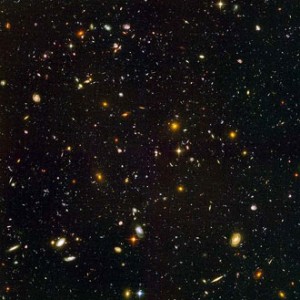
Our quest to understand the mystery of the universe has left so many unanswered questions that even today scientists can only speculate based on accepted theories and laws of physics.
Things like how big the universe really is, how it came into being, and if there’s really life on the other side of the universe still fascinates a lot of people. Let us take a glimpse on some of the on some of the marvels of our infinite universe.
Galaxies
We need not travel far to get into one. In fact our planet in the solar system is, and has always been since the beginning, a part of a galaxy composed of myriads of stars we now know as the Milky Way.
Our sun is just one of the untold millions that span the entire breadth of our galaxy. Viewed from afar, it appears like a glowing disk, hence the name “galaxy” or “galactos” which means “milky” in Greek. On earth, it appears like a faint band of light.
The center to which every star and heavenly bodies gravitate is believed to be a very powerful black hole due to its immense gravitational force that keeps everything in its proper orbit. That’s right, even our solar system revolves around the center of the galaxy. Andromeda is another galaxy similar to ours that is known to be the closest neighbor of Milky Way 2.5 million light years away.
Solar System
The idea of an immense, galactic star system starts with our basic knowledge of the solar system. At first, it was believed that the earth is the center of the universe and everything, including the sun, revolves around it. It was later proven that the earth is just one of the nine planets that revolve around the center – the sun.
But our sun is no less stationary as it appears to be. Like our planet, the sun also rotates in its own axis and revolves along with the entire solar system around the center of the Milky Way galaxy. Of all the nine planets, ours is the only one that has all the conditions suitable for human life to exist. Other life forms may also exist in other planets due to the presence of some elements that may possibly support life.
How big is the Universe
Some scientists are divided over the size of universe. Those who believe everything came up as a result of the “big bang” claim the universe is shrinking as the galaxies and other heavenly bodies decelerate after the explosion and tends to go back and accelerate into its initial position due to the gravitational force pulling each other towards the center.
But later observation proves otherwise. To their astonishment, the galaxies are constantly accelerating, not towards the center but away from each other. In other words, the universe is actually expanding. This only makes determining the real size of the universe next to impossible. There are an estimated 170 billion galaxies in the entire universe. That doesn’t include those that are beyond observable range.
Recent Discoveries
A recent discovery about the earth’s twin planet has stirred up a lot of interest and has caught the world’s attention. Nasa’s Kepler telescope transmitted what appeared to be a resemblance of the planet earth revolving around a sun similar to ours 945 light years away.
The presence of a water vapor atmosphere indicates the planet (Kepler 20f) may have been able to support life, although it may be too hot for human existence. The discovery opens up the possibility of many other “earth-like” planets mankind may someday call their new home.
Recommended Articles:
Interesting Facts about Helliconia – “New Earth”
Interesting Facts about Aurora Borealis

